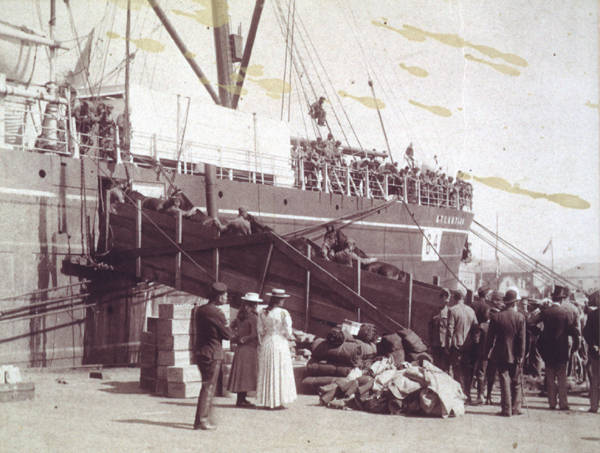 |
 |
|
South African (Boer) War
The South African (Boer) War (1899–1902) won support from the Tasmanian government only after other Australian colonies had made offers. This first contingent of eighty soldiers, commanded by Captain Cyril St Clair Cameron, was drawn mainly from rural districts. This pattern of recruitment continued, especially as mounted troops and 'genuine bushmen' became essential when the Boers adopted guerrilla tactics. Public enthusiasm was evident when 15,000 people farewelled the first contingent from Hobart in October 1899, and became widespread after the Boer victories of 'Black Week' in December. Patriotic subscriptions funded the equipment of a contingent of mounted infantry, and the Union Jack Society clothed and equipped men of the second Tasmanian contingent. In rapid succession in early 1900 the first contingent was reinforced and second and third contingents were sent to South Africa, applications for these units being oversubscribed by more than five to one. Enthusiasm reached its peak when the siege of Ladysmith was relieved in 1900, the news prompting large patriotic celebrations. Jingoism overwhelmed much opposition. The Hobart Clipper labelled the conflict 'The Gold War'; its editor was assaulted at a public meeting. John Earle, miners' leader, condemned the war, but later became Premier. The war benefited Tasmanian industry, especially jam sales. The mounted infantry contributed to an incipient bushman-citizen soldier image, laying the groundwork for the Anzac digger image. About 860 Tasmanians served in South Africa, the vast majority as mounted infantry in colonial contingents (but a third of them as part of units of the Australian Commonwealth Horse, the first soldiers of the new Australian nation to serve overseas), and 27 were killed. The Tasmanian 1st Imperial Bushmen was the most highly decorated Australian unit in the war, and won two of the six Victoria Crosses awarded to Australians in South Africa. Further reading: J Bufton, Tasmanians in the Transvaal War, Hobart, 1905; R Lewis, On the veldt, Hobart, 1902. Peter Henning |
Copyright 2006, Centre for Tasmanian Historical Studies |
